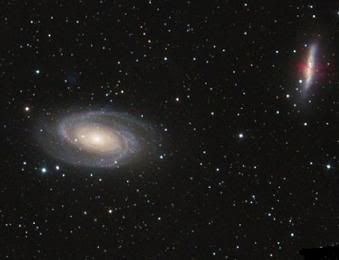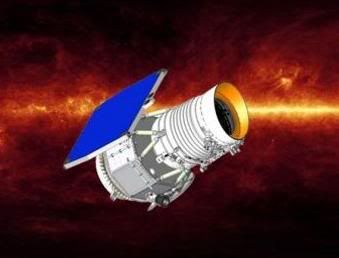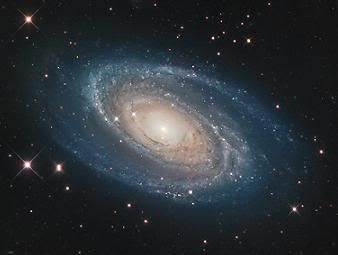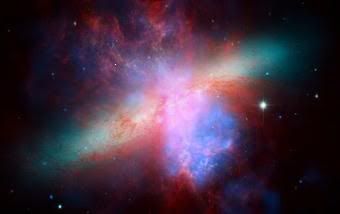Post by glactus on Jan 17, 2011 19:55:58 GMT
Partner Galaxies Wildly Different

Proximity of M81 and M82 Galaxies
NASA's Wide-field Infrared Survey Explorer (Wise) has captured a new view of two companion galaxies - a somewhat tranquil spiral beauty and its rambunctious partner blazing with smoky star formation. The unlikely pair, named Messier 81 and Messier 82, got to know each other a lot better during an encounter that occurred a few hundred million years ago as they swept by each other's avitational field.

Wise Space telescope
Messier 81 (also known as NGC 3031 or Bode's Galaxy) is a spiral galaxy about 12 million light-years away in the constellation Ursa Major. Because of its proximity to Earth, its large size, and its active galactic nucleus which harbors a supermassive black hole, Messier 81 is a popular galaxy to study in professional astronomy research. The galaxy's large size and relatively low apparent magnitude (6.98) also make it a popular target for amateur astronomy observations.

A spiral beauty - Messier 81 Galaxy
Messier 82 (also known as NGC 3034, and the Starburst Galaxy,) is a Cigar Shaped Galaxy about 12 million light-years away in the constellation Ursa Major. (Apparent magnitude 8.4) The Starburst Galaxy is five times as bright as the whole Milky Way and one hundred times as bright as our galaxy's center.

M 82 Galaxy
In 2005, the Hubble Space Telescope revealed 197 young massive clusters in the starburst core, revealing it to be a very energetic and high-density environment. Throughout the galaxy's center, young stars are being born 10 times faster than they are inside our entire Milky Way Galaxy.
`

Starburst galaxy
Credits: These are NASA images.
Text by Wikipedia.
en.wikipedia.org/wiki/Messier_81
en.wikipedia.org/wiki/Messier_82

Proximity of M81 and M82 Galaxies
NASA's Wide-field Infrared Survey Explorer (Wise) has captured a new view of two companion galaxies - a somewhat tranquil spiral beauty and its rambunctious partner blazing with smoky star formation. The unlikely pair, named Messier 81 and Messier 82, got to know each other a lot better during an encounter that occurred a few hundred million years ago as they swept by each other's avitational field.

Wise Space telescope
Messier 81 (also known as NGC 3031 or Bode's Galaxy) is a spiral galaxy about 12 million light-years away in the constellation Ursa Major. Because of its proximity to Earth, its large size, and its active galactic nucleus which harbors a supermassive black hole, Messier 81 is a popular galaxy to study in professional astronomy research. The galaxy's large size and relatively low apparent magnitude (6.98) also make it a popular target for amateur astronomy observations.

A spiral beauty - Messier 81 Galaxy
Messier 82 (also known as NGC 3034, and the Starburst Galaxy,) is a Cigar Shaped Galaxy about 12 million light-years away in the constellation Ursa Major. (Apparent magnitude 8.4) The Starburst Galaxy is five times as bright as the whole Milky Way and one hundred times as bright as our galaxy's center.

M 82 Galaxy
In 2005, the Hubble Space Telescope revealed 197 young massive clusters in the starburst core, revealing it to be a very energetic and high-density environment. Throughout the galaxy's center, young stars are being born 10 times faster than they are inside our entire Milky Way Galaxy.
`

Starburst galaxy
Credits: These are NASA images.
Text by Wikipedia.
en.wikipedia.org/wiki/Messier_81
en.wikipedia.org/wiki/Messier_82


